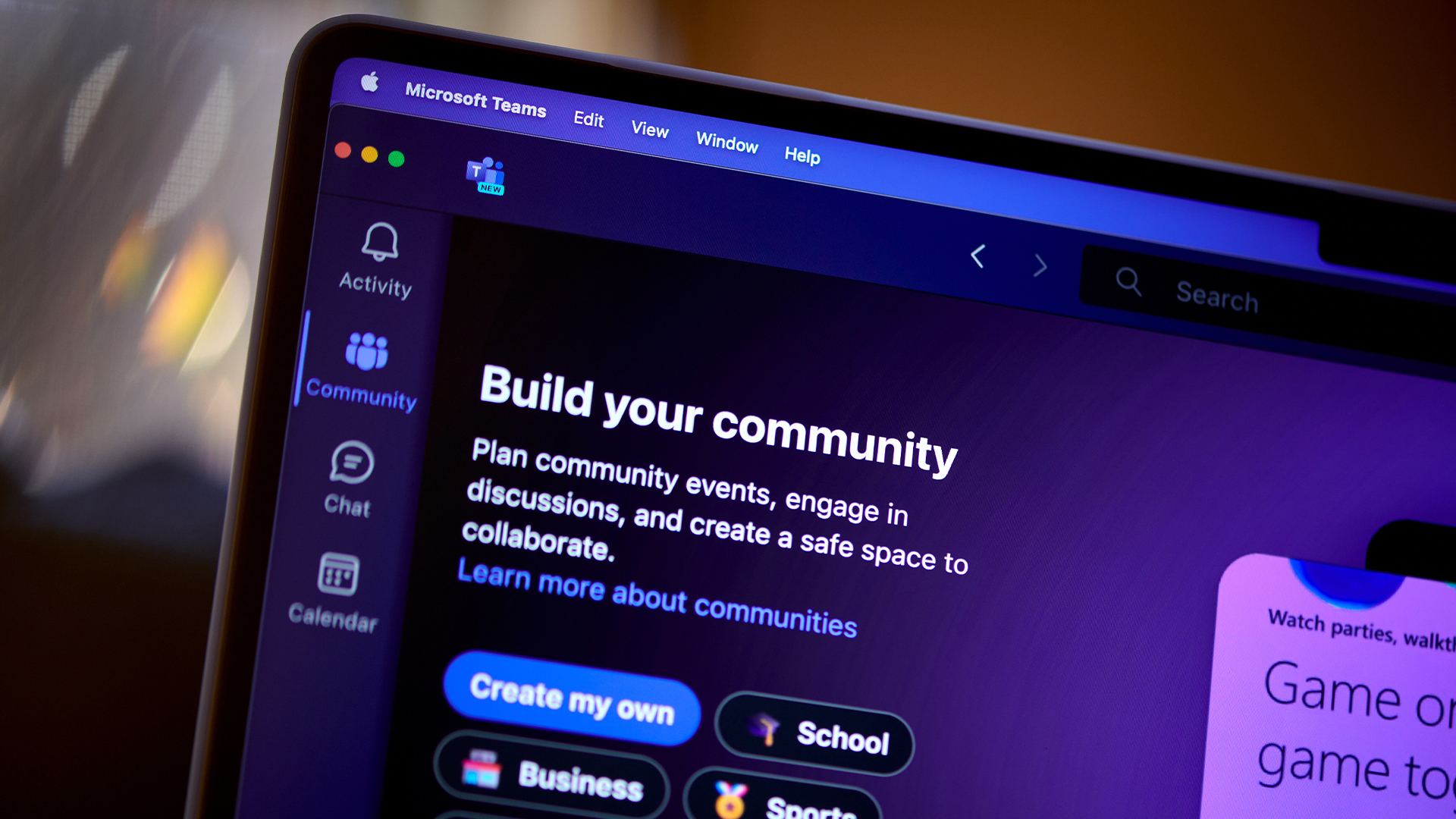Microsoft patched a critical vulnerability in its NLWeb AI search tool – but there's no CVE (yet)
Researchers found an unauthenticated path traversal bug in the tool debuted at Microsoft Build in May


Security researchers have discovered a critical flaw in NLWeb, a new tool unveiled by Microsoft just over two months ago, that allows remote users to read sensitive files without authorization.
NLWeb is a so-called agentic AI tool that allows users to search web pages using a generative AI chatbot, which will remember the users’ preferences.
Ramanathan Guha, a technical fellow at Microsoft, demonstrated how this works using the website Serious Eats during Microsoft Build in May 2025.
While searching for recipes for the Hindu festival of Diwali, Guha mentioned to the chatbot that he is vegetarian. According to Guha, this means the website will only recommend vegetarian recipes when he’s searching for inspiration from now on.
So far, so useful, but it seems new and exciting tools open the door to new and exciting vulnerabilities.
The bug was discovered by Aonan Guan and Lei Wang in a security audit of the NLWeb open source repository.
According to Guan, who wrote about his discovery in a Medium post, the flaw “allowed any remote user to read sensitive files, including system configurations (/etc/passwd) and cloud credentials (.env files), using a simple, malformed URL”.
Sign up today and you will receive a free copy of our Future Focus 2025 report - the leading guidance on AI, cybersecurity and other IT challenges as per 700+ senior executives
Guan identified a code block using os.path.normpath() that he said “immediately raised a red flag”.
“The function normalizes path separators but does not prevent a user from "climbing" out of the intended directory with ../ sequences. It's a classic path traversal flaw waiting to be exploited,” he noted.
Guan pointed to three separate oversights in the code that he said led to the vulnerability: improper sanitization, an expanded attack surface, and a lack of final path validation.
What’s being done about the NLWeb flaw?
While the flaw was discovered on 28 May and a vulnerability report submitted the same day, Guan has only just made his and Lei’s findings public.
Additionally, while Microsoft Security Response Center committed a patch on 30 June it confirmed to Guan on 1 July that it wouldn’t be issuing a CVE for the issue.
There is no suggestion from Guan that organizations deploying or experimenting with NLWeb should abandon their projects.
Instead he advises they:
- Update their instance immediately “to any version including or after commit 8ffdb0f from the official GitHub repository”
- Implement WAF/reverse proxy rules
- Never bind NLWeb directly to a public IP address, thus avoiding direct public exposure
- Configure monitoring systems to issue high-priority alerts for suspicious HTTP 404 or 400 error responses for URIs that have path traversal patterns
“This case study serves as a critical reminder that as we build new AI-powered systems, we must re-evaluate the impact of classic vulnerabilities, which now have the potential to compromise not just servers, but the ‘brains’ of AI agents themselves,” Guan said.
ITPro contacted Microsoft for comment on the report, but hadn’t received a response at the time of publication.
Make sure to follow ITPro on Google News to keep tabs on all our latest news, analysis, and reviews.
MORE FROM ITPRO
- NCSC says ‘limited number’ of UK firms affected by SharePoint attack
- SharePoint flaw: Microsoft says hackers deploying ransomware
- Warning issued after SharePoint flaw puts entire corporate networks at risk

Jane McCallion is Managing Editor of ITPro and ChannelPro, specializing in data centers, enterprise IT infrastructure, and cybersecurity. Before becoming Managing Editor, she held the role of Deputy Editor and, prior to that, Features Editor, managing a pool of freelance and internal writers, while continuing to specialize in enterprise IT infrastructure, and business strategy.
Prior to joining ITPro, Jane was a freelance business journalist writing as both Jane McCallion and Jane Bordenave for titles such as European CEO, World Finance, and Business Excellence Magazine.
-
 Microsoft CEO Satya Nadella wants an end to the term ‘AI slop’ in 2026
Microsoft CEO Satya Nadella wants an end to the term ‘AI slop’ in 2026News Microsoft CEO Satya Nadella might want the term "AI slop" shelved in 2026, but businesses will still be dealing with increasing output problems and poor returns.
-
 New security features are coming to Microsoft Teams this month
New security features are coming to Microsoft Teams this monthNews From 12 January, weaponizable file type protection, malicious URL detection, and a system for reporting false positives will all be automatically activated.
-
 These Microsoft Teams security features will be turned on by default this month – here's what admins need to know
These Microsoft Teams security features will be turned on by default this month – here's what admins need to knowNews From 12 January, weaponizable file type protection, malicious URL detection, and a system for reporting false positives will all be automatically activated.
-
 The Microsoft bug bounty program just got a big update — and even applies to third-party code
The Microsoft bug bounty program just got a big update — and even applies to third-party codeNews Microsoft is expanding its bug bounty program to cover all of its products, even those that haven't previously been covered by a bounty before and even third-party code.
-
 Trend Micro issues warning over rise of 'vibe crime' as cyber criminals turn to agentic AI to automate attacks
Trend Micro issues warning over rise of 'vibe crime' as cyber criminals turn to agentic AI to automate attacksNews Trend Micro is warning of a boom in 'vibe crime' - the use of agentic AI to support fully-automated cyber criminal operations and accelerate attacks.
-
 Microsoft Teams is getting a new location tracking feature that lets bosses snoop on staff – research shows it could cause workforce pushback
Microsoft Teams is getting a new location tracking feature that lets bosses snoop on staff – research shows it could cause workforce pushbackNews A new location tracking feature in Microsoft Teams will make it easier to keep tabs on your colleague's activities – and for your boss to know exactly where you are.
-
 NCSC issues urgent warning over growing AI prompt injection risks – here’s what you need to know
NCSC issues urgent warning over growing AI prompt injection risks – here’s what you need to knowNews Many organizations see prompt injection as just another version of SQL injection - but this is a mistake
-
 AWS CISO Amy Herzog thinks AI agents will be a ‘boon’ for cyber professionals — and teams at Amazon are already seeing huge gains
AWS CISO Amy Herzog thinks AI agents will be a ‘boon’ for cyber professionals — and teams at Amazon are already seeing huge gainsNews AWS CISO Amy Herzog thinks AI agents will be a ‘boon’ for cyber professionals, and the company has already unlocked significant benefits from the technology internally.
-
 HPE selects CrowdStrike to safeguard high-performance AI workloads
HPE selects CrowdStrike to safeguard high-performance AI workloadsNews The security vendor joins HPE’s Unleash AI partner program, bringing Falcon security capabilities to HPE Private Cloud AI
-
 Microsoft opens up Entra Agent ID preview with new AI features
Microsoft opens up Entra Agent ID preview with new AI featuresNews Microsoft Entra Agent ID aims to help manage influx of AI agents using existing tools